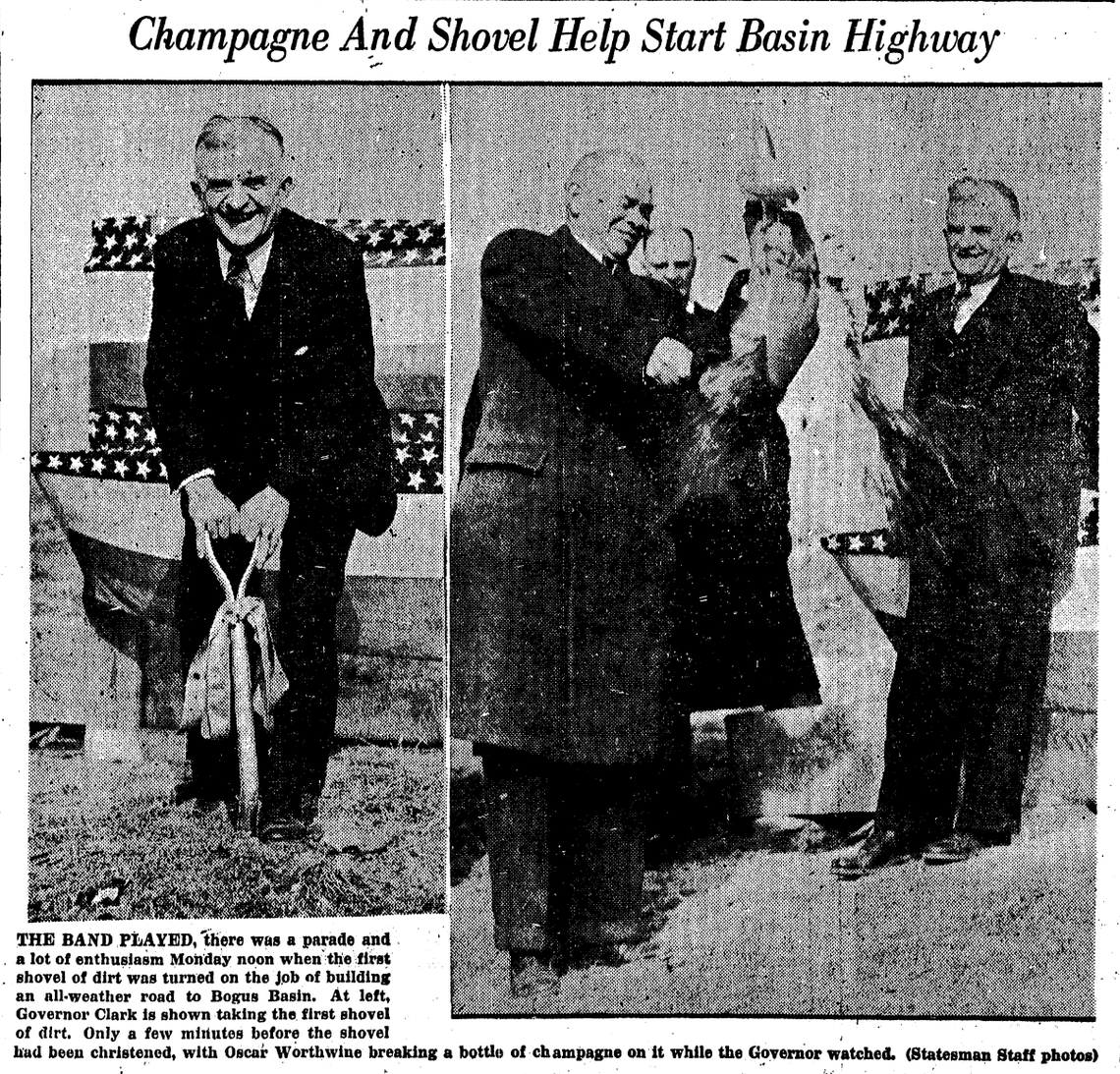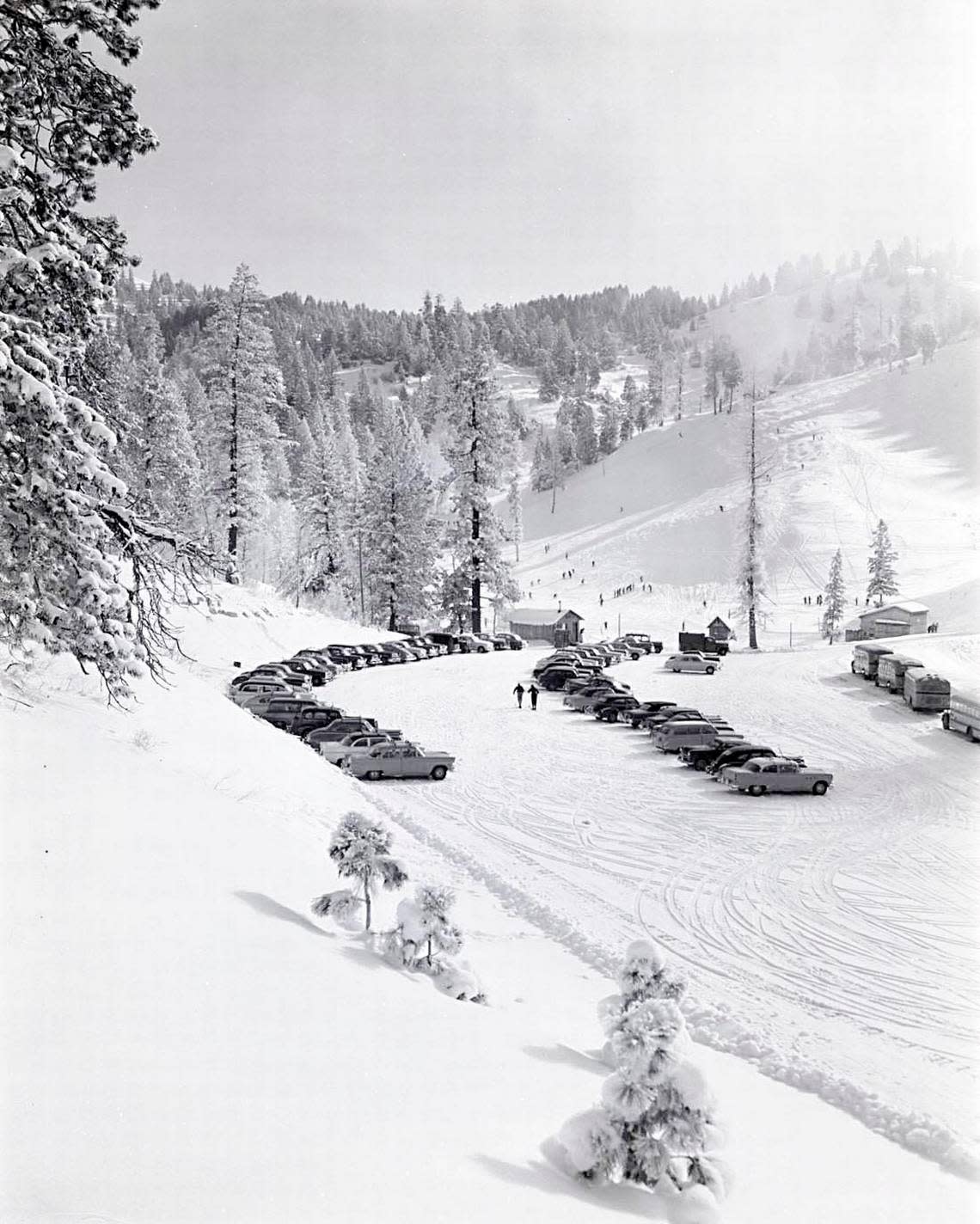What’s so ‘bogus’ about Boise ski area? How Bogus Basin got its name, troll legend
Bogus Basin has been an institution in Boise for decades — long enough that some people judge the seasons by it, planting their gardens only when snow has melted off Shafer Butte and welcoming winter when night skiing lights make the mountain glow.
The ski area is celebrating its 80th anniversary this year, so for many Treasure Valley residents, its name is familiar. But for newcomers, it can raise eyebrows. What’s so “bogus” about this ski area, and why would it want to be affiliated with a word suggesting it’s a sham?
Susan Saad, Bogus’s director of community and customer relations, told the Idaho Statesman her team is asked about the origin of the ski area’s name more than anything else. The word “bogus” traces back to the 1830s, according to the Oxford English Dictionary. The ski area’s moniker came about 30 years later, around when Boise first became a city.
“In the 1860s, there was a group of individuals who were up in (the Bogus area), and they were manufacturing fake gold,” Saad said. “And they came to town and were busted, ultimately. And it was at that time that the name Bogus Basin came to be because it was bogus gold.”
According to an 1896 issue of the Idaho Statesman, Boise County commissioner Frank Moore discovered the counterfeit operation while prospecting near Shafer Butte. The article said the counterfeiters melted copper and brass together to approximate the weight and color of gold. The melted mixture was passed through sieves to create different-sized grains resembling gold dust.
“After a bath in muriate of gold it was ready for use,” the Statesman article said. “The friction caused by carrying in the buckskin pouch always used by miners gave it brightness and made the imitation to look still more like the genuine.”
A 1938 Statesman article recounted that the counterfeiting came to light in November of 1866 with the arrest of Thomas G. Murphy. Though the 1938 article noted the name Bogus Basin had “an unsavory reputation,” it stuck.
In the 1920s when the chamber of commerce began scouting locations for scenic drives, Bogus made the list. U.S. Forest Service officials said they intended to set the area aside as a summer camp. By the 1930s, it was earmarked as a ski area bearing the name prompted 70 years earlier in a fake gold rush.
These days, Bogus Basin embraces the unusual name.
“Over the years we have kind of come into the name,” Saad said. “There’s a lot going on with the name and it’s been really fun to lean into that.”
Do you remember Bogus Basin Road’s single lane?
Getting to Bogus is an experience unlike any other ski area, resource development manager Cissy Madigan told the Statesman. From its intersection at Curling Road, the route winds through the mountains for 15 miles before reaching the main Bogus Basin parking lot. Often the two-lane road is slick or snowy, with conditions near the top quite different from those in Boise.
This winter, Bogus Basin officials posted daily road reports on social media letting people know what to expect at different points of the route. But it hasn’t always been that way.
The road was first OKed for construction in the 1920s, and the Civilian Conservation Corps broke ground in 1938.
“It’s kind of a labor of love that built the road there,” Saad said. “There was a groundbreaking parade on Harrison Boulevard.”
Bogus Basin Road was originally one lane, albeit a wide one. Cars went up the mountain in the morning and the direction of travel switched in the afternoon — Madigan said she thinks around 2 p.m. — to allow visitors to head back down.
Old photos show classic cars trudging through deep snow on the dirt road, which wasn’t paved until the 1960s.
Today, Bogus Basin maintains the entire road, which is partially in Ada and Boise counties, in the winter with its own snow plow crew.

Bogus trolls or snow snakes?
If you’ve driven Bogus Basin Road, perhaps you’ve heard about the trolls. Or maybe it was snow snakes?
Both legends involve the cattle guard near mile marker 4. Madigan, who grew up skiing at Bogus, recalled that kids would do a patty cake routine, raising their hands to the roof of the car as they passed the cattle guard to keep the snow snakes at bay.
“I have no idea how it (came about), just whoever was ahead of us taught us that,” Madigan said. “But it was the snow snakes that you kept under the cattle guard.”
The ritual was meant to bring good luck on the mountain.
“You don’t want to get a snow snake when you’re skiing because it will grab you and make you fall,” Madigan said.
She said the troll legend seems to be more common these days. In that lore, you actually want to bring the fabled creatures with you to the mountain. Some people stop at the cattle guard and open their car doors to allow the trolls to hitch a ride. On the way home, they open the doors again to drop off the trolls.
The troll legend has taken on a life of its own. In 2019, a yellow sign reading “Caution Trolls” and bearing a drawing of a troll was posted on Bogus Basin Road and quickly removed by the Ada County Highway District.
Over the years, Bogus Basin has created merchandise featuring the trolls. Madigan and Saad said they’ve never heard about trolls affiliated with any other ski areas.
A unique nonprofit
Saad noted another unique feature of the ski area: its nonprofit status. She said Bogus Basin has always been a nonprofit but became a 501(c)(3) charitable organization in 2005.
Most ski areas in the United States are for-profit corporations, making Bogus Basin among a small handful of nonprofits. Saad said it may be the largest nonprofit ski area in the country.
“All the earnings go back into the area instead of real estate or outside investors,” Saad said. “It’s really unusual and really powerful.”

Madigan said the nonprofit business model allowed Bogus Basin to stay open later than ever this year — into early May — even as guest visits tapered off.
“We have the opportunity to say it’s not about how many dollars you’re making each of those open days, but the community that we serve,” Madigan said.
